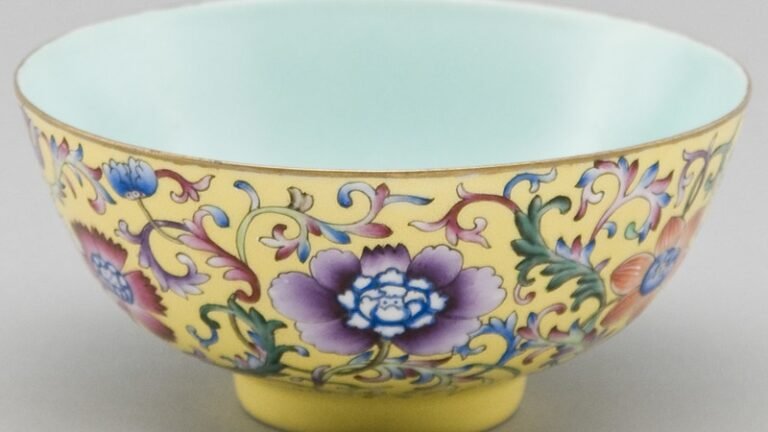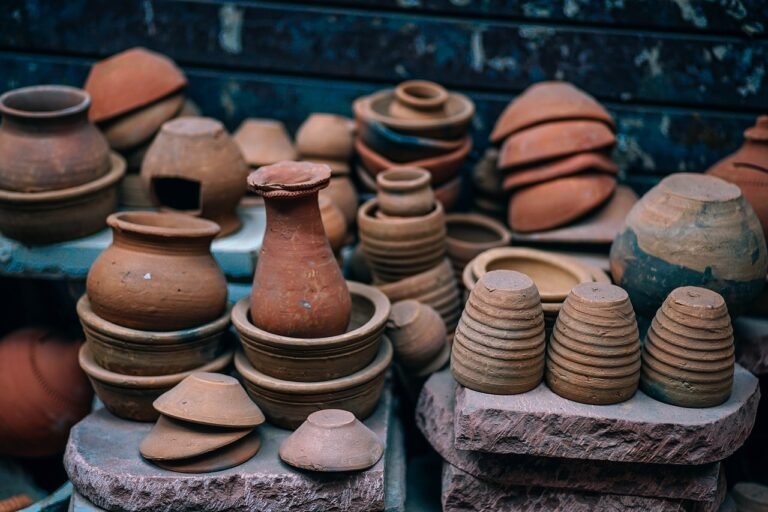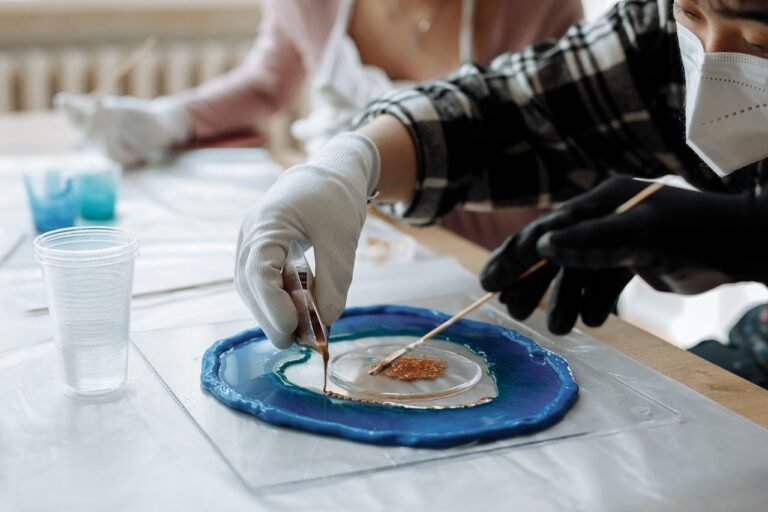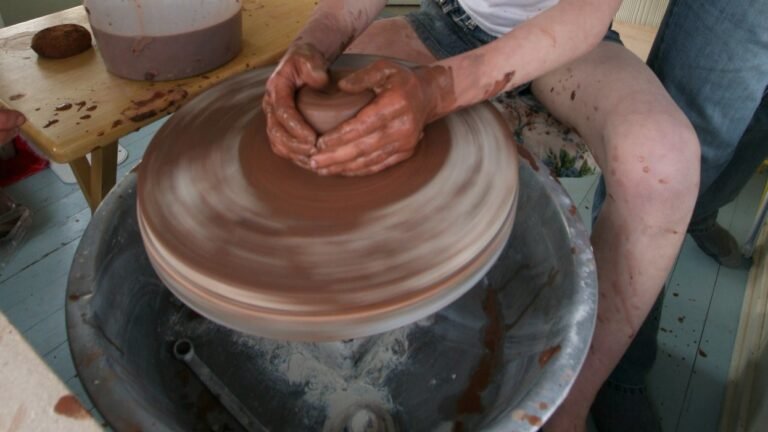Pottery And Maya Civilization: What Is Their Connection?
Mesoamerica’s Maya civilization was one of the most prominent indigenous cultures. The Maya people inhabit southern Mexico, Guatemala, Belize, El Salvador, and Honduras today. How do Maya civilization and pottery relate?
The Maya people produced pottery in pre-Columbian times. They made pottery by hand, following many steps and using various materials. The vessels came in different colors, patterns, and shapes. They served a variety of purposes.
This culture is famous for its well-developed writing system, architecture, mathematics, art, calendar, and astronomical system. Discover the Maya civilization in this short video.
Did The Mayans Produce Pottery, And What Were They Like?
The Mayans used painted pottery for festive events to serve food and beverages. Today, Mayans in Guatemala, Belize, and southern Mexico are still creating ceramics.
Mexican archaeologists once found ceramic vessels in a cave at the Mayan ruins of Chichen Itza. According to the National Institute of Anthropology and History, these items date to around 1000 AD.
Did The Mayans Use A Pottery Wheel?
The Mayans did not have or use potter’s wheels. Instead, they used a device called the k’abal. It was a wooden disk that sat on top of a smooth board between the potter’s feet. Also, they used the coil technique to make pottery.
Mayans used a mixture of clays and minerals to create the clay slip. Afterward, they decorated the pottery with slips. The fourth-century saw them using a variety of colors including yellow, purple, red, and orange.
Mayan Pottery: What Type Did They Make?
Maya ceramics consisted of three basic types which they used in daily life. They were bowls, plates, and cylinders. Ordinary people used monochrome pottery while the elite favored polychrome types.
What Purpose Did Maya’s Vessels Serve?
Early Mayans used pottery for food preparation and to store food and water. The structures were primitive and often undecorated.
Ceramics with polychrome patterns played an active role in feasting. The Maya elite regarded feasting as a major event in their lives. They used it as a way to show their social status and power. As a result, decorative ceramic vessels gained significant value in Mayan culture.
The hieroglyphs on most drinking vessels identify the owner. The inscription also indicates the artist and the contents. Polychrome paintings with hieroglyphs decorated the vessels of the elite Mayans. Ordinary people had much simpler decorations.
Other than feasting and rituals, these elaborate vessels also served as funerary offerings. There are paintings and texts on these vessels. They reveal a great deal of information about Maya’s beliefs, social status, rituals, and traditions.
Mayan artists drew flowers on the cylindrical bowls that the elite used to drink cacao. The flowers boosted the cacao’s flavor. They had the idea that it would improve their drinking experience.
Pots became a storytelling device. Cylindrical vases and plates were popular as they provided more surface area for storytelling. Over the centuries, Maya paintings evolved, but the vessel shape remained almost unchanged.
Maya pottery reflects the socioeconomic status of their society. The geological structure provided an abundant supply of essential materials. Limestone and volcanic ash were the two primary ingredients in their ceramic production.
As an agriculture-based culture, the Maya valued pottery for rituals. For rain and a prosperous harvest, they used painted pottery to pray to their gods. Take a look at this video to get a sense of the intricate Maya vessel paintings.
What Happened During The Maya Classic Period?
Pottery gained significant importance during the Maya Classic period. It became an academic task that required knowledge of Mayan history and mythology. They used to inscribe the manufacturer’s location or the scene’s setting.
Trading and gifting helped spread ceramics throughout civilization. That is why archaeologists discovered many ceramic pieces from Tikall at Teotihuacan. Bulk quantities of simple, one-colored ceramics were available to the general public.
Mayan artists tried out various colors of slips made from minerals and clay. It was during this classic era that they developed more colors, such as yellow, purple, red, and orange. This change in color usage opened up the door to elaborate and sophisticated designs.
What Is The Mayan Method Of Making Ceramics?
Clays found in the Maya territory vary in color and strength when fired. The ancient Mayans obtained clay from the exposed river systems. Even today’s Mayans find clay from the highland valleys. Ancient Mayans used indigenous methods for making, inscribing, and painting pottery.
Pumice areas provided many types of tempering. Volcanic locations consisted of igneous and metamorphic rock, sand, and ash as tempers. Mixing clay with temper gave them the desired consistency, strength, and durability.
Mayans were unaware of the potter’s wheel. Therefore, they built the pottery using coil and slab techniques. The slab method involves creating boxes and other types of additions like lids and feet. For this, they used square slabs of clay.
After shaping the pot, they allowed it to dry until it was leather hard. Painting, engraving, or slipping followed.
They fired the vessels in kilns as the final step. The kilns were primitive and found outside in the open air. These kilns burned wood, charcoal, or even grass for fuel. Mayans did not glaze ceramics in the past. Instead, they gave a fine finish by burnishing them.
What Is Maya Blue And How Is It Made?
Aztec and Maya cultures used this color pigment to decorate pottery, murals, and statues. With remarkable stability, it has maintained its beauty throughout the ages. Scientists marveled at its resistance to solvents, acids, and high temperatures until recently.
In the 1960s, scientists discovered that Maya blue contains two main ingredients. They used spectrometry to determine them. The substances are indigo dye and palygorskite.
Maya Codex-Style Vessels: What Are They?
Maya codices (singular codex) are folding books from the pre-Columbian Maya civilization. Codex-style vessels tend to have paintings similar to those in these books. It is one of the most famous and recognizable styles of ancient Maya art.
Clay pottery is one of the most common types of Maya art remaining today. Maya civilization evolved through the centuries. Those paintings on vessels carry the story of their evolution to the next generation.







